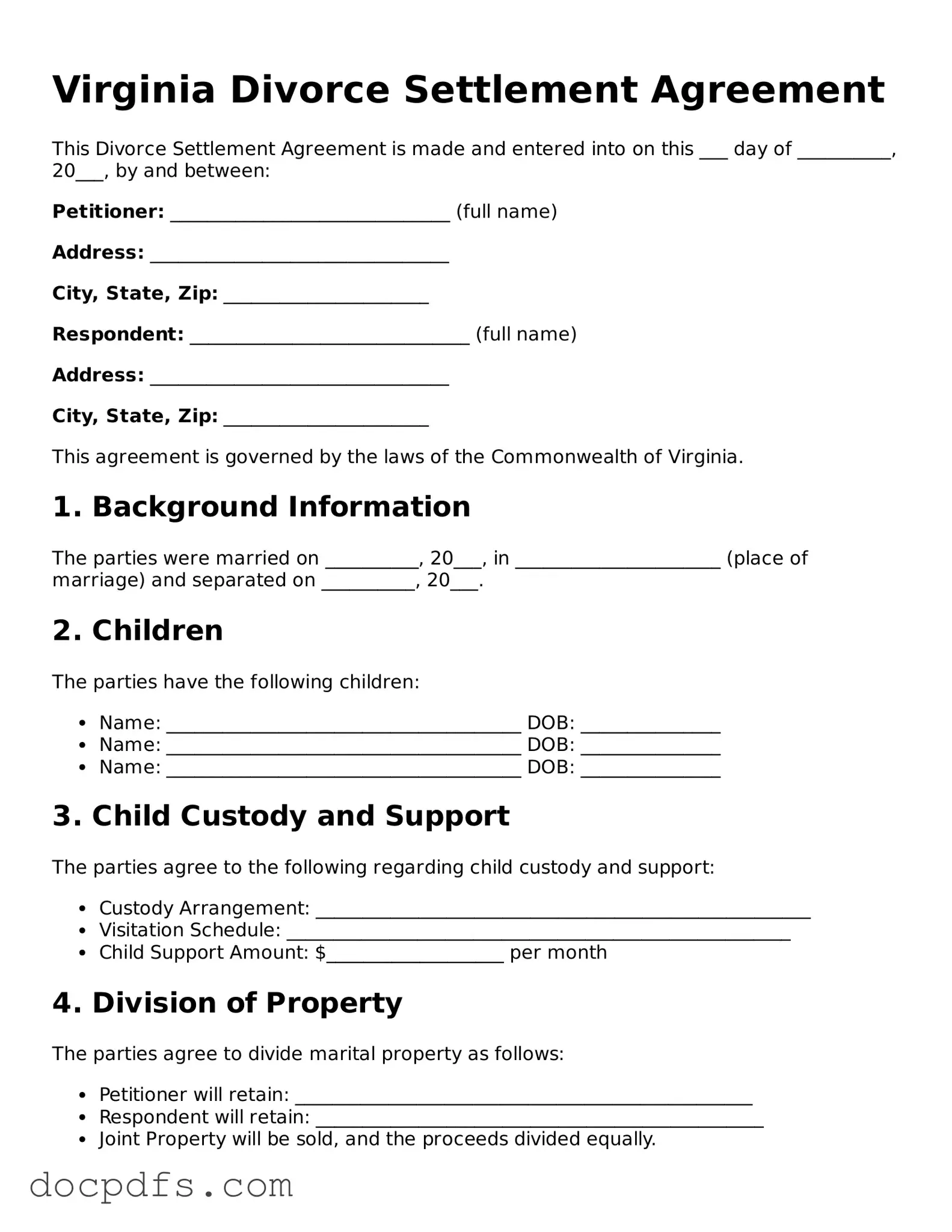When navigating the complexities of divorce in Virginia, a Divorce Settlement Agreement form serves as a crucial document for couples seeking to finalize their separation amicably. This form outlines the terms agreed upon by both parties regarding various important aspects, such as the division of property, custody arrangements for children, and spousal support. By clearly detailing these agreements, the form helps to prevent future disputes and provides a framework for both individuals to follow post-divorce. It is essential that both parties understand the implications of the terms they are agreeing to, as this document will be presented to the court for approval. In addition, the form may include provisions for debt allocation, health insurance coverage, and other financial responsibilities, ensuring that all relevant issues are addressed. Completing this agreement thoughtfully can lead to a smoother transition into the next chapter of life for both spouses.
